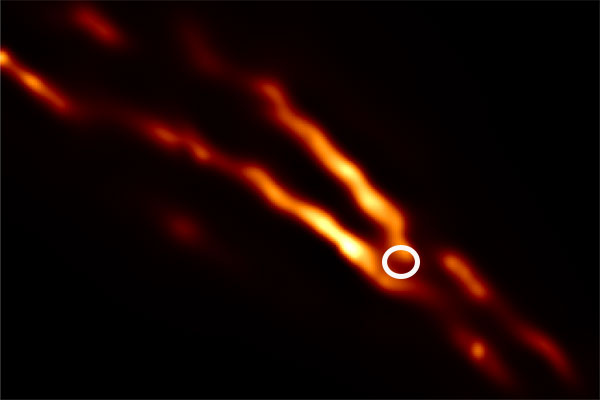

"We were stunned by how well the size of the ring agreed with predictions from Einstein's theory of general relativity," said EHT project scientist Geoffrey Bower from the Institute of Astronomy and Astrophysics at Academia Sinica in Taipei, Taiwan. The new view captures light bent by the powerful gravity of the black hole, which is 4 million times more massive than the sun. This strongly suggested that the object – known as Sagittarius A*, or Sgr A* (pronounced "sadge-ay-star") – is a black hole, and the new image provides the first direct visual evidence of it.Īlthough we cannot see the black hole itself, because it is completely dark, glowing gas around it reveals a telltale signature: a dark central region called a "shadow," surrounded by a bright ringlike structure. Scientists had previously seen stars orbiting around something invisible, compact and very massive at the center of the Milky Way. The image is a long-anticipated look at the massive object that sits at the very center of our galaxy. Researchers at the University of Arizona played a leading role in the effort, providing two of the eight telescopes used to make the observations and performing data analysis that resulted in the image unveiled Thursday.įrom left: UArizona researchers Dimitrios Psaltis, Feryal Özel, Chi-Kwan Chan and Dan Marrone are all members of the Event Horizon Telescope Collaboration. The image was produced by a global research team called the Event Horizon Telescope Collaboration, using observations from a worldwide network of radio telescopes. This result provides overwhelming evidence that the object is indeed a black hole and yields valuable clues about the workings of such giants, which are thought to reside at the center of most galaxies.

It was captured by the Event Horizon Telescope, an array of radio telescopes named after the "event horizon," the boundary of the black hole beyond which no light can escape.Īstronomers have unveiled the first image of the supermassive black hole at the center of our own Milky Way galaxy. This image of Sagittarius A* is the first direct visual evidence of the presence of a supermassive black hole at the center of our galaxy.


 0 kommentar(er)
0 kommentar(er)
